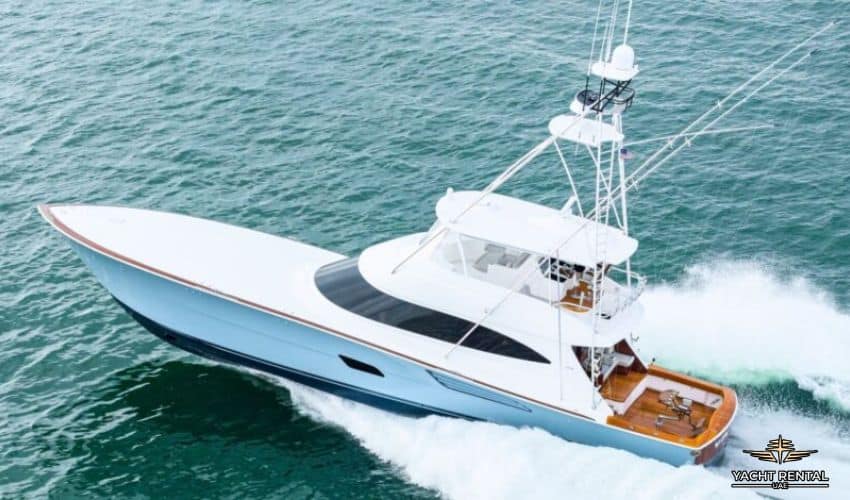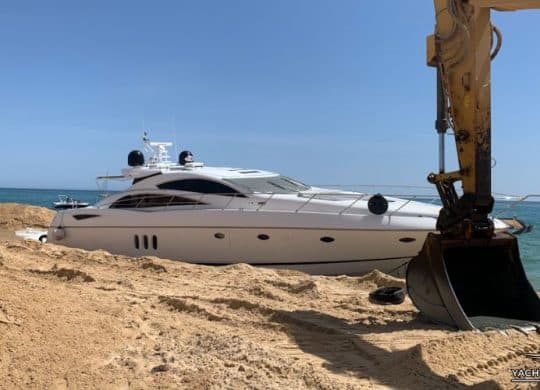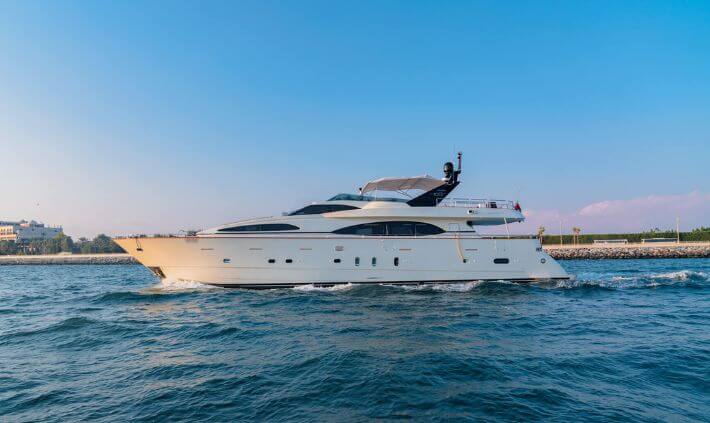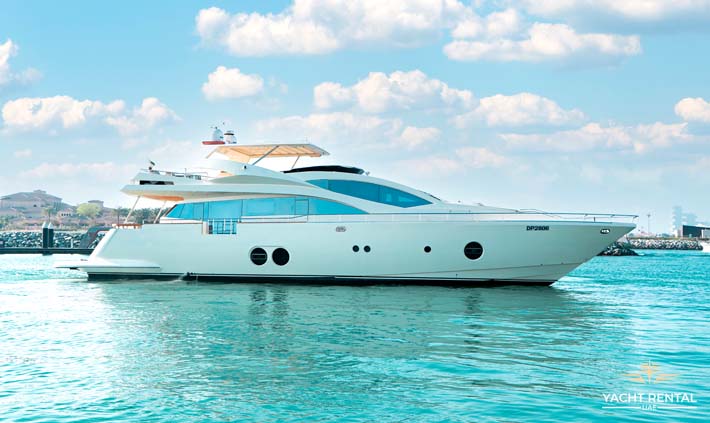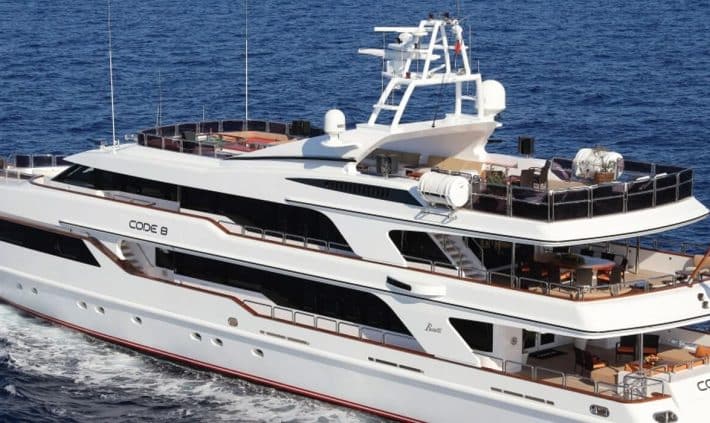First, Are They Actually Fishing?
Before you do anything, check if the other boat is truly “engaged in fishing.” It means they have gear in the water that makes it hard for them to move. A boat with a few fishing rods out for fun is not the same thing. Look for two simple clues:
The Official Signs: Working fishing boats will show signals.
- In the Daytime: They fly a symbol that looks like two ice cream cones, point to point.
- At Night: They use special lights. Red over white means fishing. Green over white means they are trawling (dragging a net).
The Obvious Actions: The best clue is just watching them. If a boat is moving super slowly, staying in one spot, or has a crew busy with equipment, treat them like a working fishing boat.
Who Has the Right-of-Way?
The rules of the water are very clear on this. Working fishing boats get to go first.
- If you are in a powerboat, you must steer clear of them.
- If you are in a sailboat, you also must steer clear.
Think of them as being stuck in place while they work. They can’t just turn to get out of your way. You can, so the responsibility is on you. The only time this changes is if a boat is coming up to pass you from behind; they must stay clear of you.
What Kind of Fishing are They Doing?
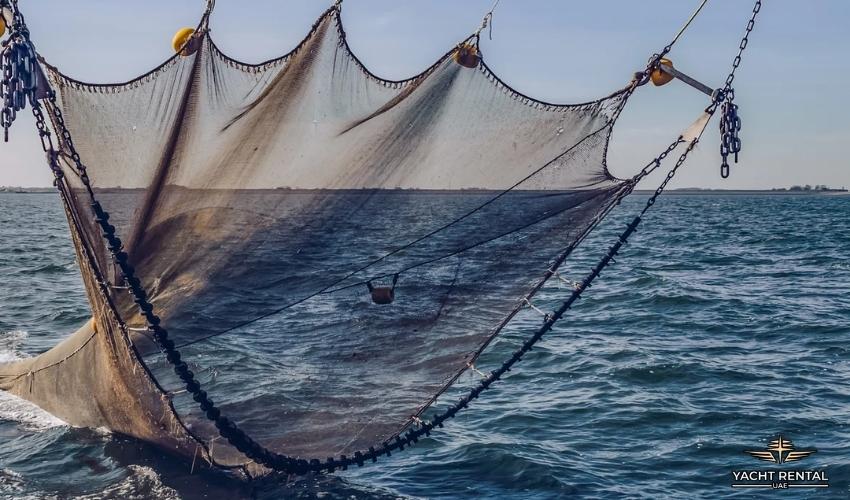
If you can figure out how they are fishing, you will know where the danger is.
Trawling
A trawler is like an underwater farmer, dragging a huge, heavy net. They cannot turn quickly. The wires holding the net are under incredible strain. Stay far away from their back and sides. Always plan to go around behind them.
Longlining
Imagine a single fishing line that could be miles long, with thousands of hooks on it. That’s a longline. It’s marked with a buoy or flag at each end. Your job is simple: never, ever go between those two markers. Go way around the whole setup.
Pot and Trap Fishing (for Lobster or Crabs)
This creates a field of buoys on the surface. Each buoy has a line going down to a trap on the bottom. To you, it looks like a minefield. Slow your boat to a crawl and weave through the buoys carefully. Watch the fishing boat to see which way they are moving; it usually shows you how the lines of pots are laid out.
Purse Seining
This boat uses a giant net to circle a school of fish, then pulls a cord at the bottom to close it like a drawstring purse. While they do this, they are either stuck going in a circle or not moving at all. Stay completely outside of their circle.
Gillnetting
Think of this as a long fence or wall of netting hanging in the water. It’s very hard to see. It should be marked with buoys at either end. Find those markers and go all the way around, not across.
How to Make a Safe Pass
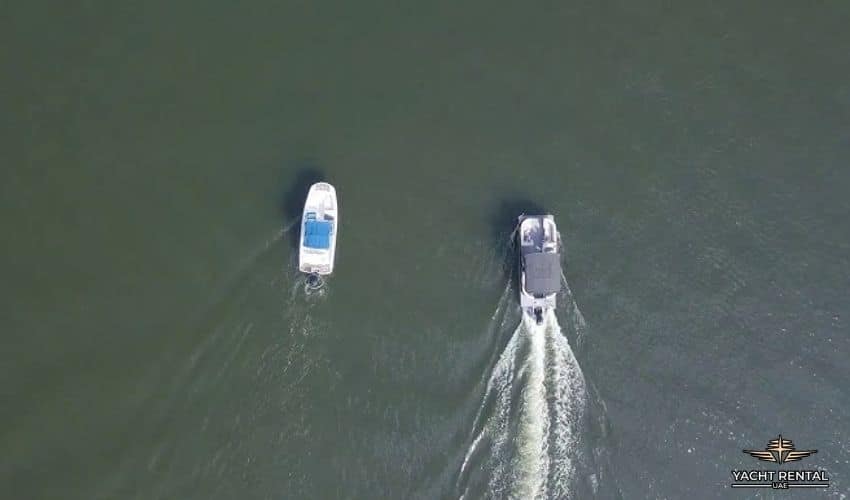
Knowing the risks, here are the simple steps to take every time.
- Slow Down First. As soon as you spot a fishing boat, pull back the throttle. A big wake from your boat can be dangerous for their crew. Slowing down also gives you time to think.
- Give Them Tons of Room. Don’t just squeak by. Stay hundreds of feet away if you can. The more space you give them, the safer everyone is.
- Make Your Move Obvious. Don’t make a small, confusing turn. Make a big, clear turn early on. This shows the other captain, “I see you, and I am going around.”
- Just Ask if You’re Unsure. If you are in a narrow spot or have any doubt, get on your VHF radio. A quick call on Channel 16 to the “fishing vessel near [your spot]” can clear things up fast. Just ask them which side they want you to pass on.
What to Do When Things Get Tricky
- In Fog or Rain: When you can’t see well, you must rely on your radar and your ears. A fishing boat will be a very slow target on your screen. Listen for their horn signal (one long blast followed by two short ones). Your own speed should be dead slow.
- Two Boats Working Together: You might see two boats pulling one giant net between them. This is a “pair trawl.” Treat the two boats and all the water between them as a solid wall. You must go around the entire operation.
- A Boat Acting Strangely: If a fishing boat is moving in a weird way or isn’t showing the right signals, just give it even more space. Don’t get close. Your job is to avoid a problem, so take charge and steer clear.
Also Read: What is the Primary Responsibility for a Vessel Operator Assisting a Boat in Distress
Final Words About Encountering a Fishing Boat
Out on the water, the rules are less about who is “right” and more about who is smart and courteous. When you see a fishing boat, remember there are people on that deck working hard. They are not trying to get in your way; they are just trying to make a living. The best boaters are the ones who act with kindness and caution. A friendly wave and a wide pass make for a better, safer day for everyone.
Frequently Asked Questions (FAQs)
What if the fishing boat seems to be coming right at me?
Slow down and make a clear turn to your right (starboard). The goal is for both boats to pass with their left (port) sides facing each other. Since they are a fishing boat, you are the one who has to do the turning to make this happen.
How can I even see their nets or lines?
Most of the time, you can’t. You see the things that mark them, like buoys and flags. This is why you must watch the boat and its crew. The safest bet is to assume the gear is all around them and just pass behind the boat.
Am I in trouble if my boat’s wake causes a problem?
Yes, you are responsible for your wake. If your wave rocks their boat and causes damage or someone gets hurt, it’s on you. Slowing down until you make no wake is a basic part of being a good and responsible skipper.
Sources:
- International Maritime Organization, “International Regulations for Preventing Collisions at Sea, 1972 (COLREGs).”
- U.S. Coast Guard, “Navigation Rules of the Road.
Always be aware of any specific local regulations in your particular cruising area, as rules can vary in narrow channels, harbors, or protected marine parks.

